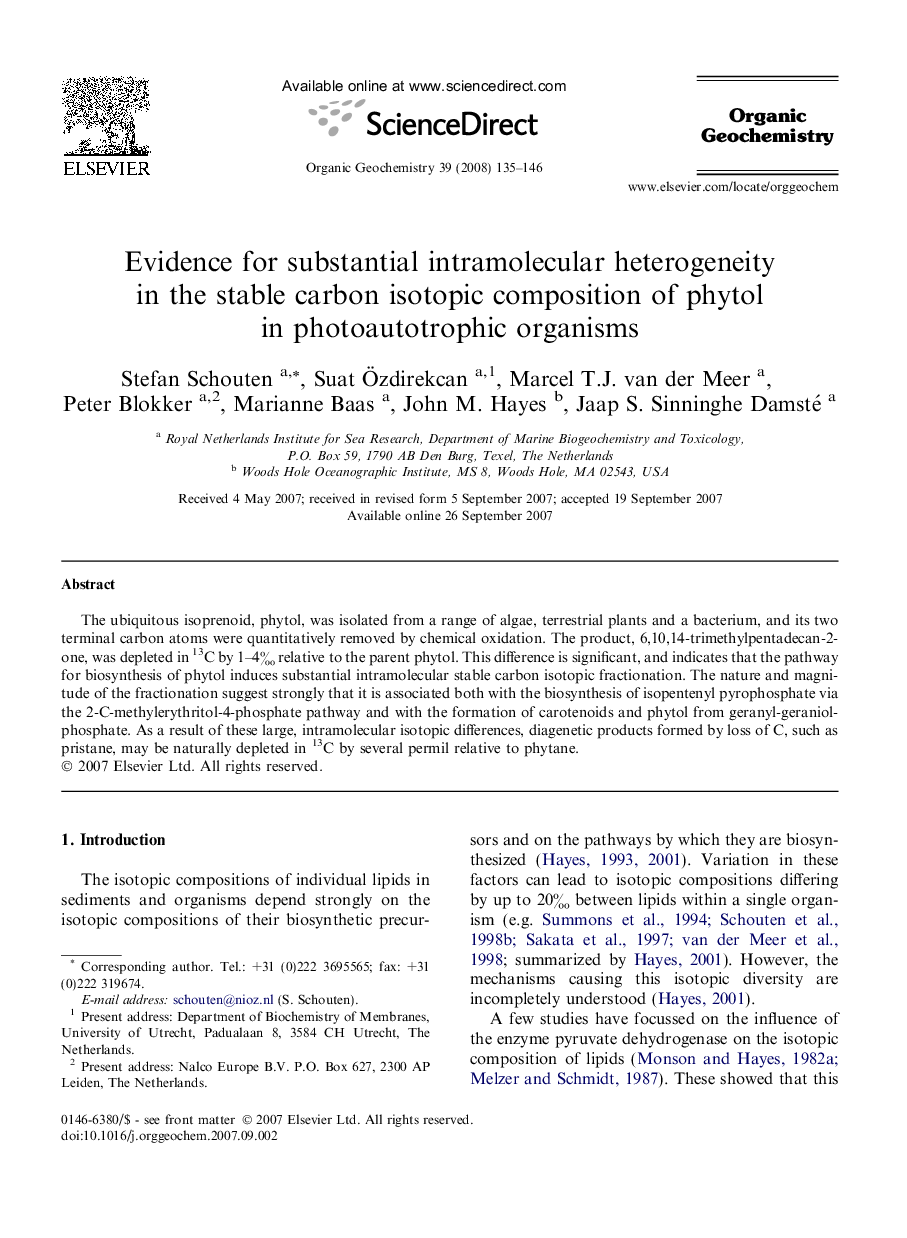| Article ID | Journal | Published Year | Pages | File Type |
|---|---|---|---|---|
| 5163231 | Organic Geochemistry | 2008 | 12 Pages |
Abstract
The ubiquitous isoprenoid, phytol, was isolated from a range of algae, terrestrial plants and a bacterium, and its two terminal carbon atoms were quantitatively removed by chemical oxidation. The product, 6,10,14-trimethylpentadecan-2-one, was depleted in 13C by 1-4â° relative to the parent phytol. This difference is significant, and indicates that the pathway for biosynthesis of phytol induces substantial intramolecular stable carbon isotopic fractionation. The nature and magnitude of the fractionation suggest strongly that it is associated both with the biosynthesis of isopentenyl pyrophosphate via the 2-C-methylerythritol-4-phosphate pathway and with the formation of carotenoids and phytol from geranyl-geraniolphosphate. As a result of these large, intramolecular isotopic differences, diagenetic products formed by loss of C, such as pristane, may be naturally depleted in 13C by several permil relative to phytane.
Related Topics
Physical Sciences and Engineering
Chemistry
Organic Chemistry
Authors
Stefan Schouten, Suat Ãzdirekcan, Marcel T.J. van der Meer, Peter Blokker, Marianne Baas, John M. Hayes, Jaap S. Sinninghe Damsté,
